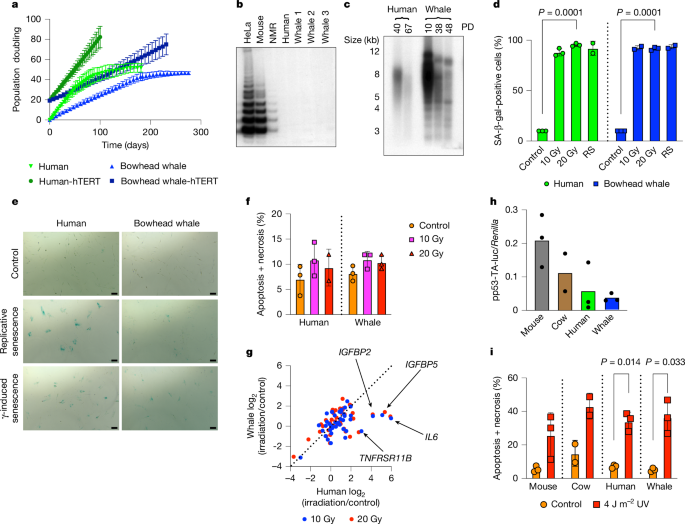
"Subsequent scientific study and age estimation through quantification of ovarian corpora, baleen dating and eye lens aspartic acid racemization analysis have supported a maximum lifespan exceeding 200 years in the bowhead whale4,5,6,7,8,9. Thus, the range of mammalian lifespans covers roughly 2 orders of magnitude, with the model organism Mus musculus living for 2-3 years, while the bowhead whale lives 100 times as long."
"Long life and large body mass predispose the bowhead whale to accumulating large numbers of DNA mutations throughout life. However, an increased number of cells and cell divisions in larger organisms does not lead to increased cancer incidence and shorter lifespans10. The apparent contradiction between expected and observed cancer rates in relation to species body mass has been noted for decades and is known as Peto's paradox2,10,11,12."
The Alaskan Iñupiat Inuit report that bowhead whales "live two human lifetimes." Scientific age estimation using ovarian corpora, baleen dating, and eye lens aspartic acid racemization supports maximum lifespans exceeding 200 years. Mammalian lifespans vary roughly two orders of magnitude, with mice living 2–3 years and bowheads living about 100 times longer. Bowheads can exceed 80,000 kg, which increases mutation accumulation risk, yet larger organisms do not show proportionally higher cancer incidence (Peto's paradox). Bowheads likely possess potent genetic cancer- and ageing-resistance mechanisms, but molecular research remains scarce and focused mainly on genome and transcriptome analyses. The multi-stage carcinogenesis model implies larger, longer-lived species require more oncogenic 'hits'; mouse fibroblasts need two pathway perturbations while human fibroblasts require five.
Read at Nature
Unable to calculate read time
Collection
[
|
...
]